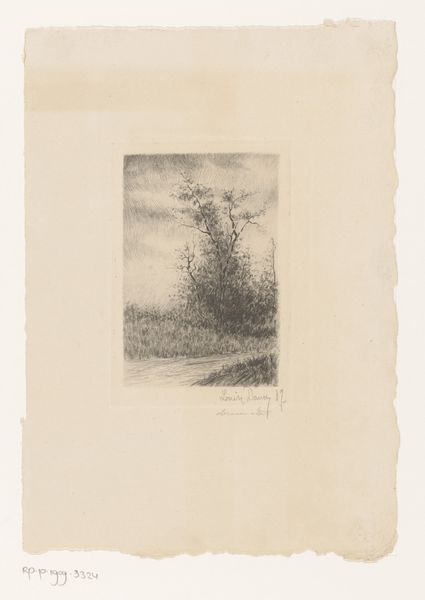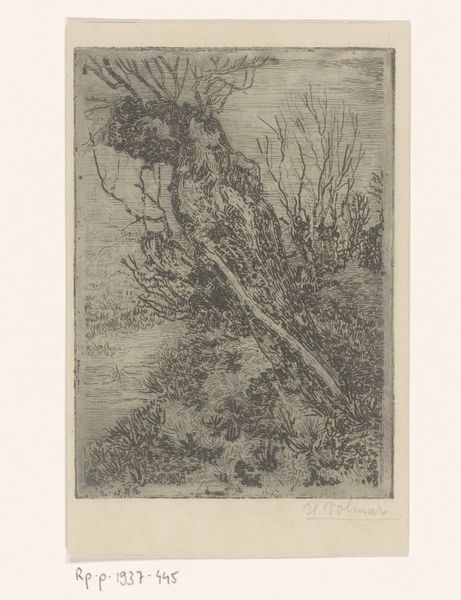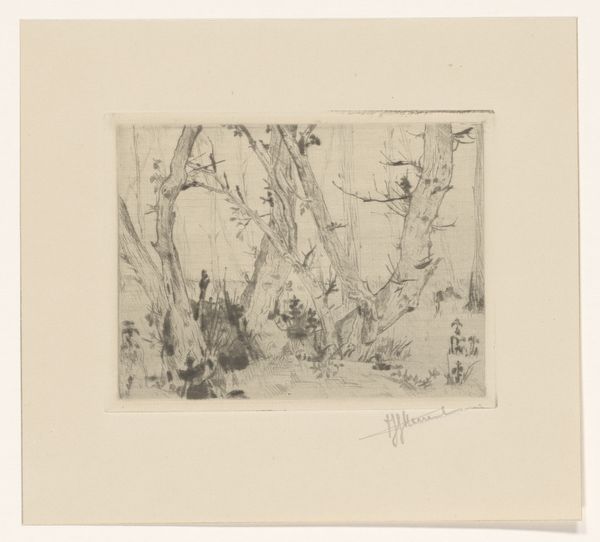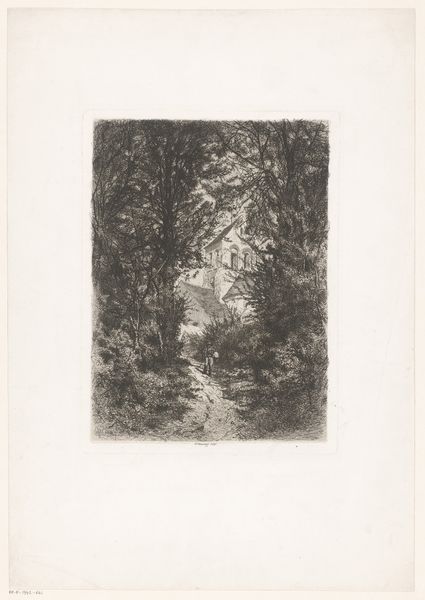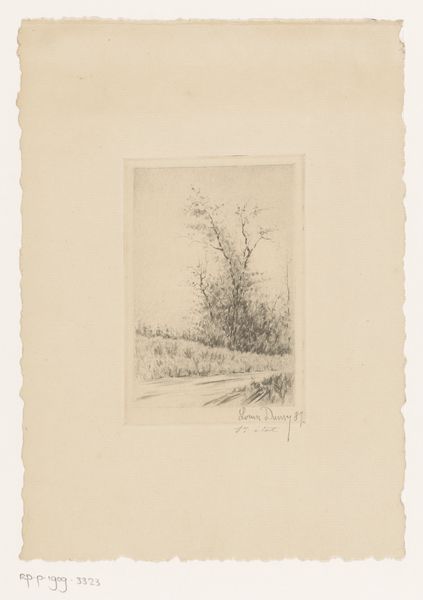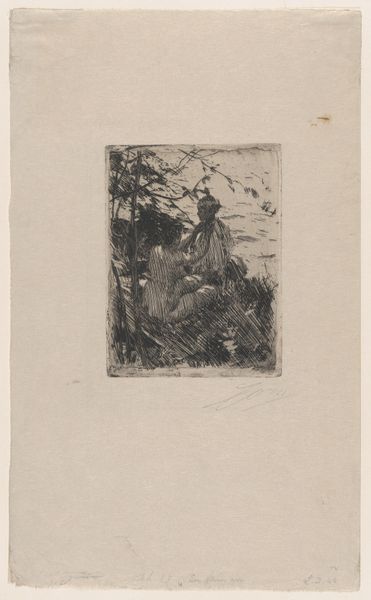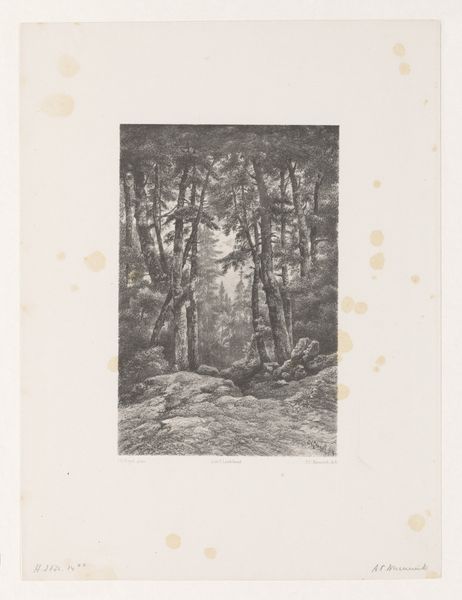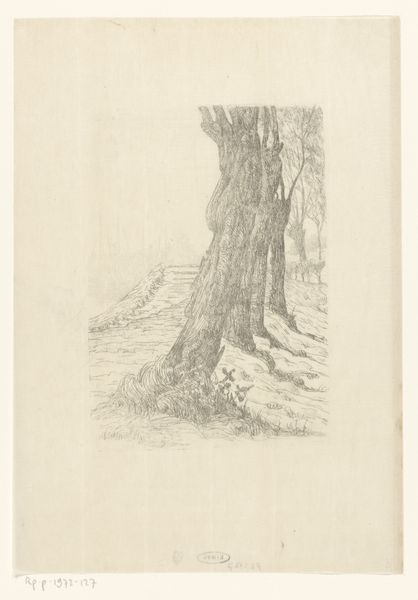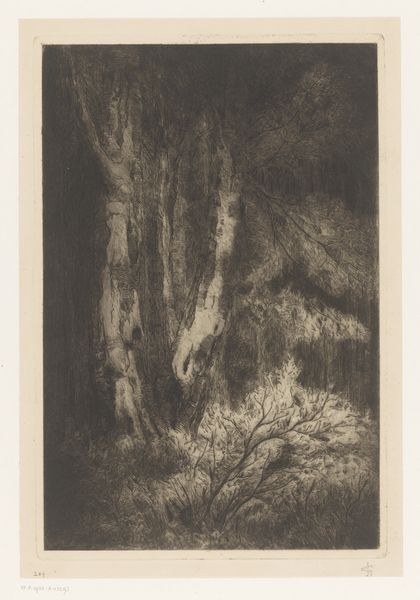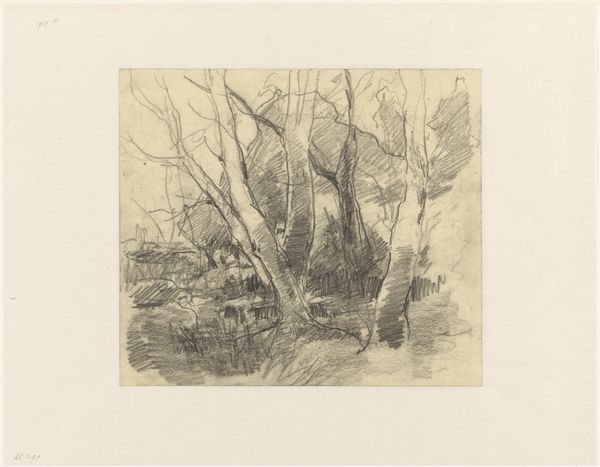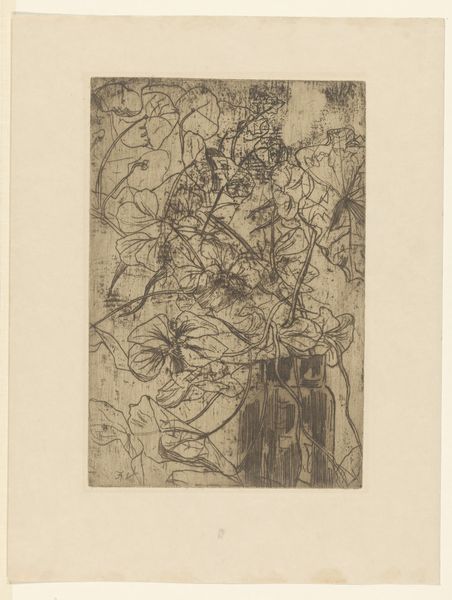
print, etching
# print
#
etching
#
line
#
realism
Dimensions: height 165 mm, width 122 mm
Copyright: Rijks Museum: Open Domain
Curator: This is a print called "Bloemstilleven," a floral still life by Carel Nicolaas Storm van 's-Gravesande. The Rijksmuseum dates it to somewhere between 1851 and 1910. Editor: My initial impression is the sheer abundance of textures. The layering creates a muted but rich tapestry. Curator: Absolutely. Storm van 's-Gravesande was a master of etching, a printmaking technique where lines are incised into a metal plate, allowing for incredibly fine detail. He was part of a wave of artists rediscovering and reviving etching as a fine art. Editor: Looking closely, you really see how that line work builds up density. It makes you consider the artist's hand laboring over each line. And what kind of studio conditions might influence this? Curator: The choice of a still life in this medium speaks to a broader context of art production in the late 19th century. Etching, like photography, democratized art by making it more accessible. Editor: Did that affect exhibition practice for pieces like this, as well as patterns of consumption? It seems quite suited to domestic display, somehow. Curator: It definitely changed things, and introduced the medium to wider audiences. Its appeal rested on its reproducibility and relative affordability. And you’re right, these prints entered private collections as well. Editor: I keep coming back to the materiality of this print, and the contrast between the delicate blooms and the rugged etching lines. It makes me think of the relationship between the idealized subject matter and the labor involved. It is very lovely. Curator: I appreciate how the artist leveraged the etching process to participate in artistic movements during the rise of print culture. Editor: I think that by focusing on the tangible, etched line as a physical act, we start to challenge those hierarchies between art and craft, thinking of the people, process, and conditions behind the art object. Curator: A truly valuable viewpoint. I will remember this for later discussions. Editor: And for me, a print such as this enriches how I think about labor's contribution to art. Thank you for contextualizing this work so clearly.
Comments
No comments
Be the first to comment and join the conversation on the ultimate creative platform.
